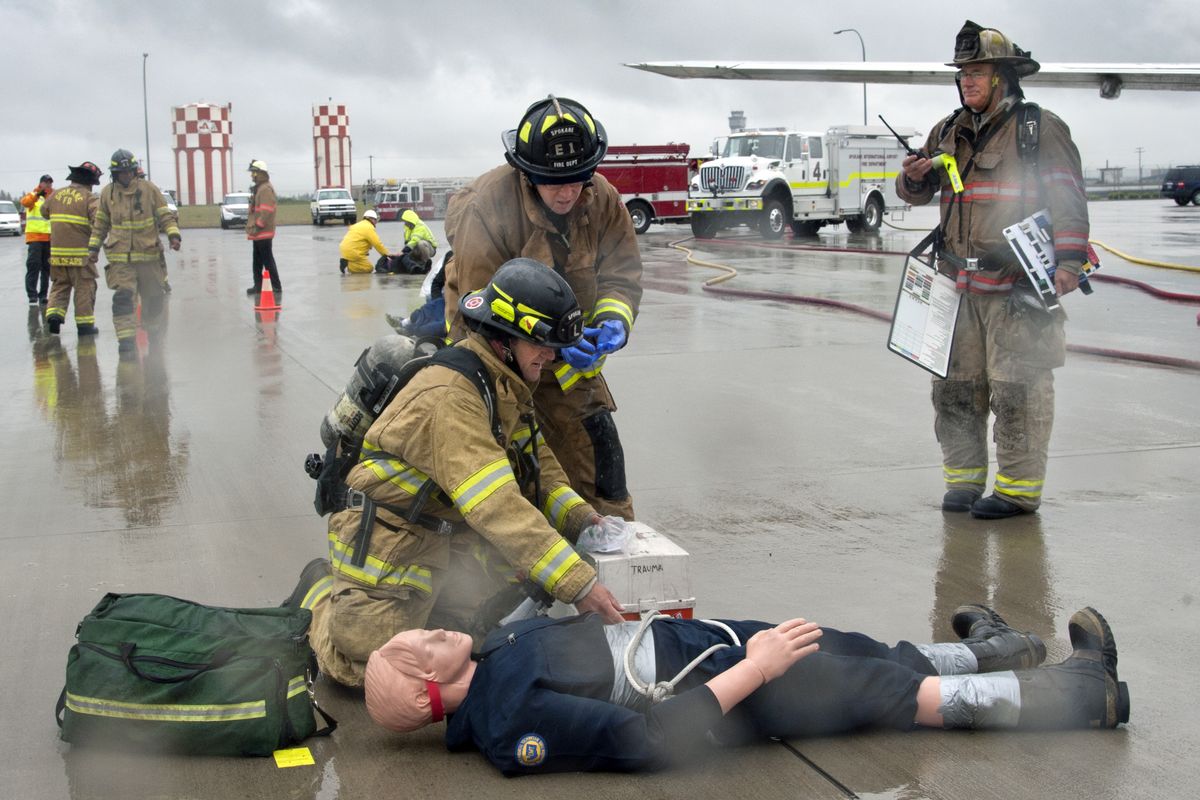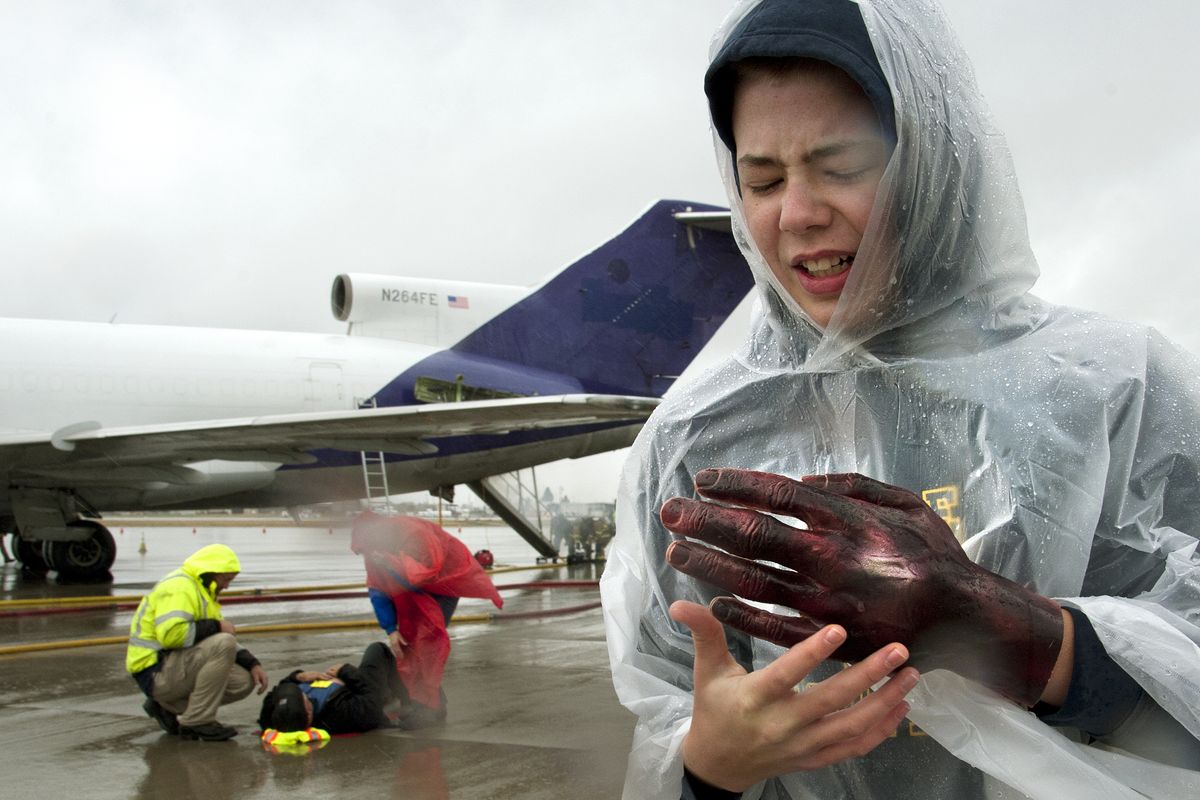Crews respond to mock air disaster
Spokane Fire Department firefighters tend to a victim in a mock airplane accident outside a donated Boeing 727 aircraft Thursday at Spokane International Airport. The full-scale drill takes place once every three years. (Dan Pelle)Buy a print of this photo
Steady rain and a southwest wind Thursday gave a feel of reality to a mock airplane accident at Spokane International Airport.
“It’s a miserable day, but that’s when these things happen,” said Larry Krauter, airport director and CEO, who was wearing a bright yellow raincoat.
“A lot of these things happen because of the weather.”
Emergency personnel converged on a cargo-loading area to test their skills, with commanders and safety officers watching for lessons that could be learned in case a real accident occurs.
About 40 volunteers wearing fake burns and blood mingled with smoke machines and life-sized mannequins to replicate a real airplane accident that took place in Florida about a decade ago, Krauter said.
In that incident, one of the engines alongside the plane’s fuselage blew up, knocking a hole in the side of the aircraft and sending shrapnel and fire into the cabin.
The scenario was not divulged to crews until they were dispatched.
The scene was built around the airport’s retired Boeing 727, which was donated by FedEx in 2012. It was towed to the spare cargo apron on the southeast side of the main runway for the drill.
Air traffic operated normally with jet planes coming and going in the background.
The lead agency was the Spokane International Airport Fire Department, backed up by crews from the Spokane Fire Department. Also on the scene were the Airway Heights Fire Department, Homeland Security personnel, airport police and AMR ambulance. In all, about 50 personnel participated.
Among the volunteers were members of the Civil Air Patrol, a handful of their parents and airport staff.
“It’s a great opportunity to see how the medical teams react if something like this happens,” said patrol member Daniel Goodman, 16, of Spokane.
Each of the “injured” passengers had a standardized tag placed around their neck to quickly identify the level of injury.
The Federal Aviation Administration requires airports to conduct mock accident drills once every three years. Conferences to go over emergency preparedness are held during intervening years.
Krauter, who said he has had firsthand experience responding to air crashes at other airports, moved around the scene trying to identify improvements. For example, he said it appeared the initial fire engines on the scene could have been positioned better to account for the stiff wind.
Commanders will convene in about two weeks to go over their notes and recommendations for improvements.
“There is a benefit in working together and having all the emergency responders work in these circumstances,” Krauter said.

